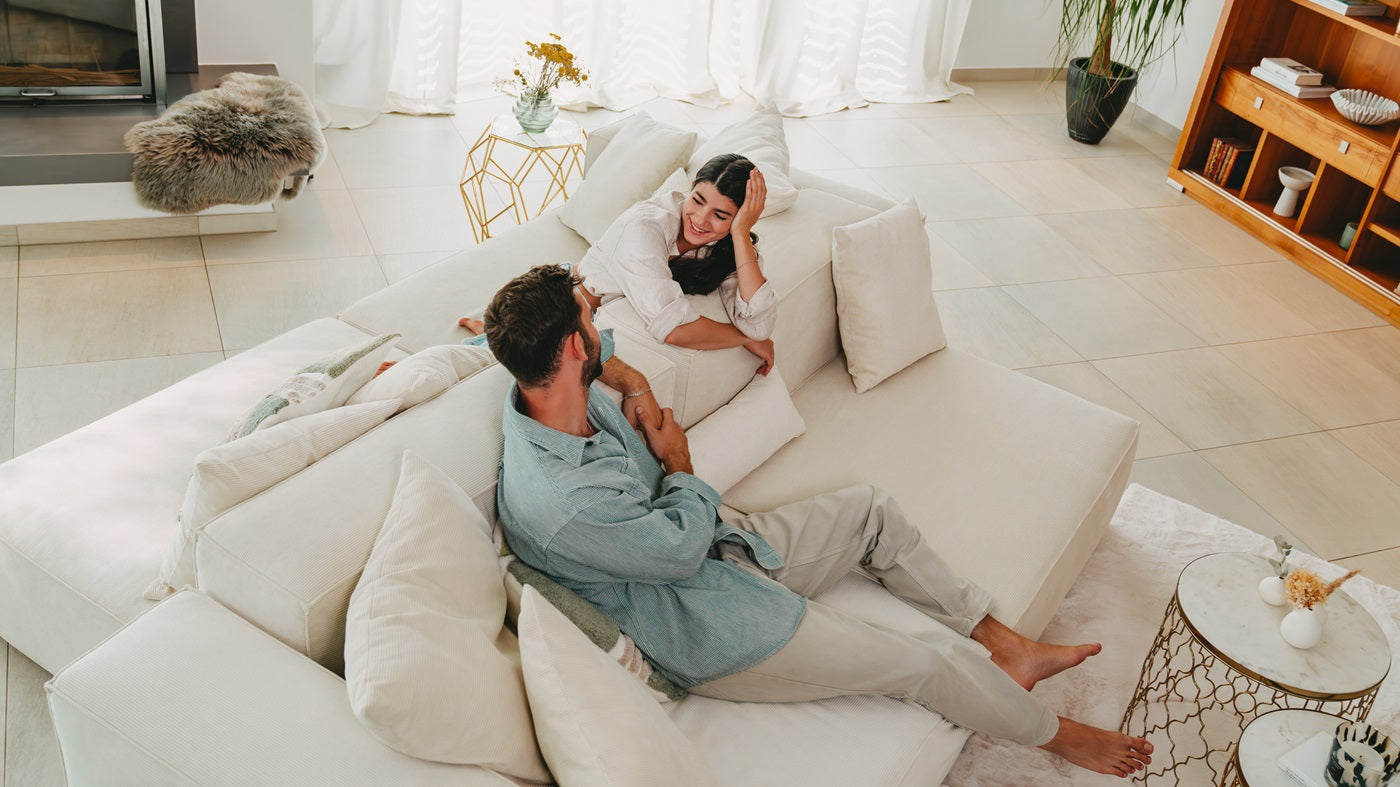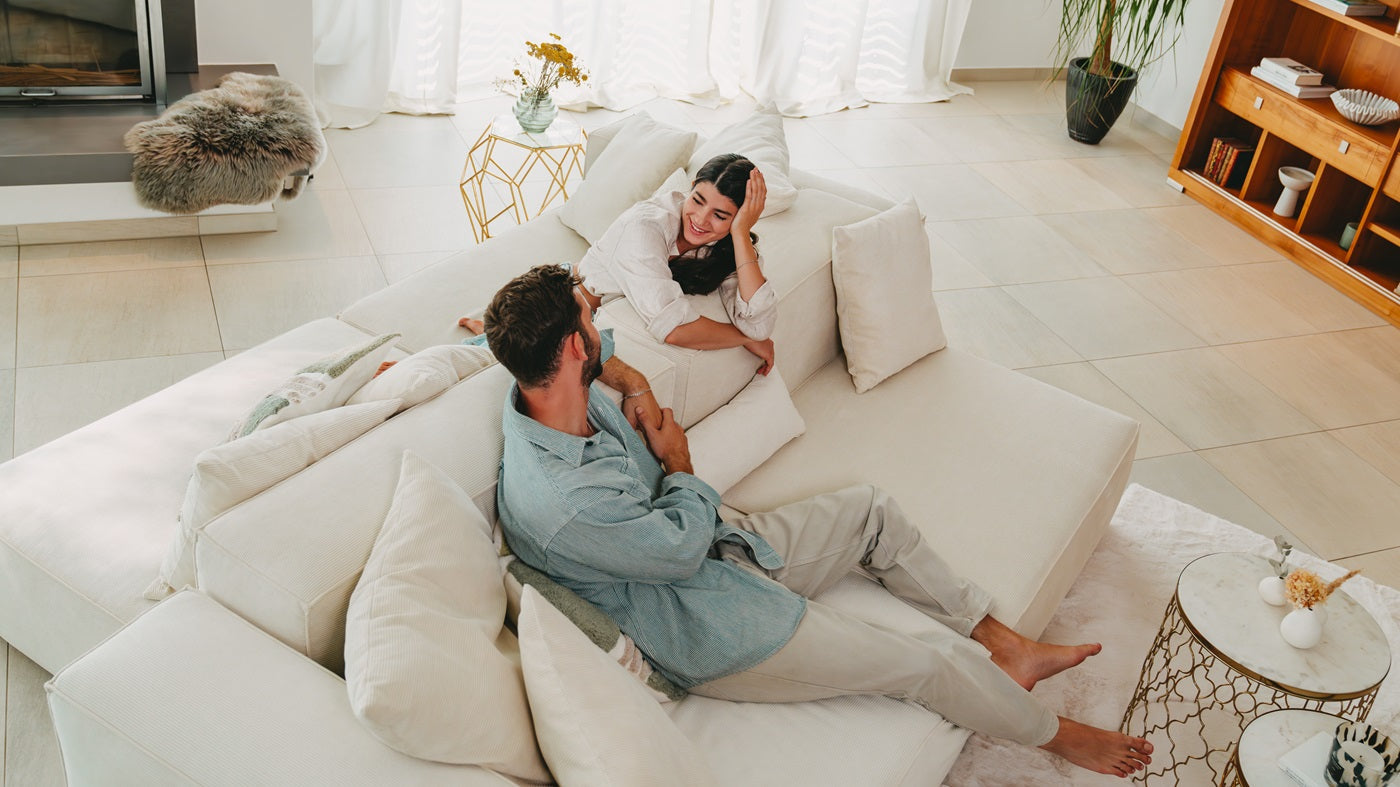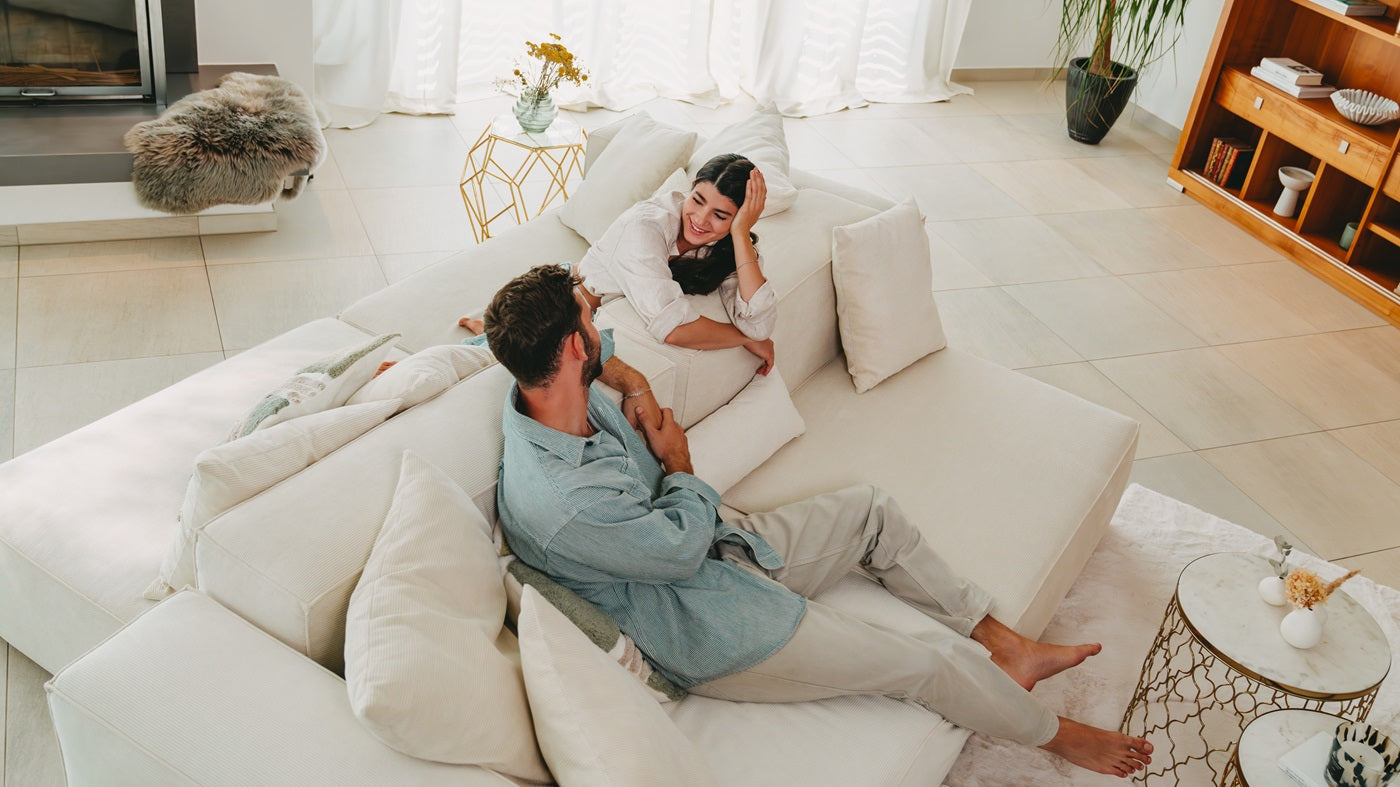Colors have a tremendous ability to influence your mood and well-being. In your living rooms, where you spend most of your time, their effect plays a crucial role. The psychology of color is a fascinating field that shows us how colors can influence our emotions and even our behavior.
The psychology of colors
Color psychology is a scientific discipline that studies how colors affect us on a mental and emotional level. Each color has a unique effect and can trigger different reactions. Some colors can have a calming and relaxing effect, while others can boost energy levels and capture our attention. Understanding how colors affect your mood is crucial for creating the right atmosphere in your living rooms.
How colors affect our mood
Dark colors like blue and green can have a calming effect and help reduce stress. They're ideal for bedrooms or rooms where you want to relax. Lighter colors like yellow and orange, on the other hand, can lift your mood and boost your energy. They're perfect for rooms where you want to be active, such as the living room or study.

The meaning of individual colors
Each color has a unique meaning and can evoke different associations. For example, yellow represents optimism and joy, while blue conveys a sense of calm and peace. On the other hand, red symbolizes passion and energy. It's important to consider the meanings of individual colors to create the desired mood in your room.
The color green is often associated with nature and can have a calming effect. It represents freshness, growth, and harmony. Green is well-suited for rooms where you want to relax and connect with nature, such as a winter garden or a yoga room.
The color purple is often associated with creativity and spirituality. It can create a mysterious and inviting atmosphere. Lilac is well-suited for rooms where you feel inspired and want to express your artistic side, such as a studio or meditation room.
The color brown represents stability and a down-to-earth atmosphere. It can create a warm and cozy atmosphere. Brown is ideal for rooms where you want to feel safe, such as a living room or dining room.
Gray is often associated with neutrality and elegance. It can create a calm and balanced atmosphere. Gray is well-suited for rooms where you want to concentrate and relax, such as an office or bedroom.
White represents purity and clarity. It can create a bright and airy atmosphere. White is well-suited for rooms where you want to refresh yourself and clarify your mind, such as a bathroom or study.
Colors and their effects in different rooms
The effect of colors can vary depending on the room. It's important to choose the right colors for each room to create the desired atmosphere.
Colors in the bedroom
A bedroom is important for creating a relaxing and calming environment. Blue and green colors are ideal for creating a peaceful atmosphere and promoting good sleep.
The color blue symbolizes calmness and serenity. It can lower heart rate and blood pressure, thus contributing to a relaxing sleep. Green represents harmony and balance and can also have a calming effect.
To achieve the desired atmosphere in the bedroom, you can use different shades of blue and green. From a soft sky blue to a deep emerald green, there are many ways to design the room.
Colors in the living room
The living room is where you relax and entertain. Warm colors like beige and brown can create a cozy and inviting atmosphere. Accent colors like red or yellow can energize the room and serve as eye-catching accents.
Beige and brown are neutral colors that have a calming effect and can make a room appear larger and more open. They work well as base colors for walls and furniture. Red or yellow accent colors can add vibrancy to the room and create an interesting contrast.
It's important to carefully select the colors in your living room to create a harmonious atmosphere. Too many strong colors can make the room feel cluttered, while too little color can make it look dull.

Colors in the kitchen
In the kitchen, it's important to create a bright and clean environment. White and bright colors give the room a fresh and clean look. Accent colors like blue or green can lift the mood and have an inspiring effect while cooking.
White symbolizes cleanliness and purity and is therefore a popular choice for kitchens. It reflects light and makes the room appear larger and more open. Bright colors like yellow or pastel shades can also create a happy and inviting atmosphere.
To make the kitchen more interesting, you can use accent colors like blue or green. These colors can lift the mood and create an inspiring environment for cooking.
Choosing the right colors for your home
When choosing colors for your living rooms, you should also consider how colors interact with light. Colors can have different effects depending on the incidence of light. It's important to test samples and observe the colors in different lighting conditions.
Choosing the right colors for your home can have a significant impact on the atmosphere and mood of your rooms. There are a variety of colors to choose from, from warm and cozy tones to cool and soothing nuances. For the living room, we recommend a sofa with washable covers and changeable covers . These have the advantage that you can change the color at any time thanks to the replaceable covers and adapt them to your needs.
Bright colors can make rooms appear larger and airier, while darker colors can make a room feel smaller and more comfortable. The position of windows and the type of lighting can also influence the effect of colors. For example, if you have a room with little natural light, light colors can help reflect light and make the room appear brighter.
The color selection should also harmonize with the desired furniture style. Classic styles may require more neutral colors, while more modern styles allow for bold and vibrant colors. If you prefer a minimalist style, you can choose a palette of neutral tones like white, gray, and beige. However, if you like a bohemian style, you can choose more vibrant colors like turquoise, orange, and pink.
It's also important to consider the colors in the different rooms of your home. Each room has its own function and mood, and the color selection should reflect this. In a bedroom, you might want to choose calming and relaxing colors, while in a living room, you might want to opt for more vibrant and inviting colors.
If you're unsure, you can get inspired by color palettes created by professional interior designers. There are also numerous online tools and apps that can help you choose the right colors for your home. There are also some providers where you can, for example , place a sofa in your living space using a virtual extension. You can find the right color. Don't forget to use samples, free colors, or free fabric patterns to order the colors and see them in the rooms where they will be used.
Choosing the right colors for your home is a personal decision that's all about creating the desired atmosphere and mood. Take the time to explore different color options and choose the ones that best suit your style and preferences. With the right colors, you can transform your living rooms into true havens of well-being.
Practical tips for using colors
When it comes to using color, there are some helpful tips that can help you get the most out of your color selection.
Colors play an important role in a room's design. They can influence the mood, create the atmosphere, and visually transform a room. But how do you combine colors effectively, and how can you use accent colors to give a room personality?
How to combine colors effectively
Combining colors can sometimes be a challenge. It's important to choose colors that harmonize and complement each other. Color charts and fabric patterns can help you explore different color combinations and make the right choice for your room.
There are several color schemes that can help you select and combine colors. A popular color scheme is the monochromatic color scheme, which uses different shades of a color to create a harmonious and elegant look. Another color scheme is the complementary color scheme, which uses colors that are opposite each other on the color wheel, creating a strong contrast.
When choosing colors, you should also consider the size of the room and the lighting conditions. Bright colors can make a space feel larger and more open, while darker colors can make a room feel more comfortable and intimate.

The role of accent colors
Accent colors can brighten a room and add personality. You can use accessories like pillows , rugs , or even wall murals. Accent colors can make a room more interesting and vibrant.
When choosing accent colors, choose ones that harmonize well with and complement the main color. You can also use different textures and patterns to enhance the visual impact.
A popular way to introduce accent colors is through the use of pops of color. These are small areas or objects in the room painted or designed in a contrasting color. For example, a wall in a neutral room can be painted a strong color to create an eye-catching effect. Another way to give your living room a splash of color is with a sofa with changeable covers . With these, you can combine different pieces and customize your living space at any time by changing the covers. To choose the right color accents, we recommend each one to configure your sofa and adapt it to your needs.
Remember that colors are a personal choice and there are no strict rules. Experiment with different color combinations and find what works best for your room.
Case studies: colors in interior design
There are many examples of successful applications of colour in interior design that can inspire.
The use of color in interior design is an art form that can significantly influence the mood and atmosphere of a room. With the right selection and combination of colors, rooms can be designed harmoniously and attractively.
Examples of successful color applications
A successful color combination can completely transform a room's atmosphere. For example, yellow wall paint can create a happy and inviting atmosphere in a dining room.
Another example of a successful color application is the use of blue in bathrooms. Blue is often associated with calmness and relaxation and can therefore create a soothing atmosphere perfect for a place of relaxation.
An interesting example of a creative use of color is the use of contrasting colors. Combining two opposing colors, such as black and white, creates an exciting visual interplay that makes the room look vibrant and modern.
How colors can change the room
It's exciting to see how colors can completely transform a room. In a small room, bright colors can make it feel larger and more open, while darker or more intense colors can make it feel more comfortable.
Green tones are often associated with nature and freshness and are therefore very suitable for rooms where a relaxing and natural atmosphere is desired, such as a living room or a conservatory.
Colors play a greater role in our living rooms than we might think. The right choice and combination of colors can not only influence the mood but also transform the room itself. By understanding the psychology of color and using practical tips, you can create an inviting and attractive atmosphere in your home.
It's also important to note that color isn't limited to walls and surfaces. Using colorful accessories like pillows, curtains, or rugs can also have a significant impact on a room's ambiance.
Another aspect to consider when using color in interior design is the effect of daylight. Natural light can influence the perception of colors and thus change the overall impression of a room. Therefore, it's important to base your color selection on the lighting situation.
Using color in interior design is a creative way to design rooms and give them a personal touch. By trying and experimenting with different color combinations, you can give your rooms an individual and unique atmosphere.





